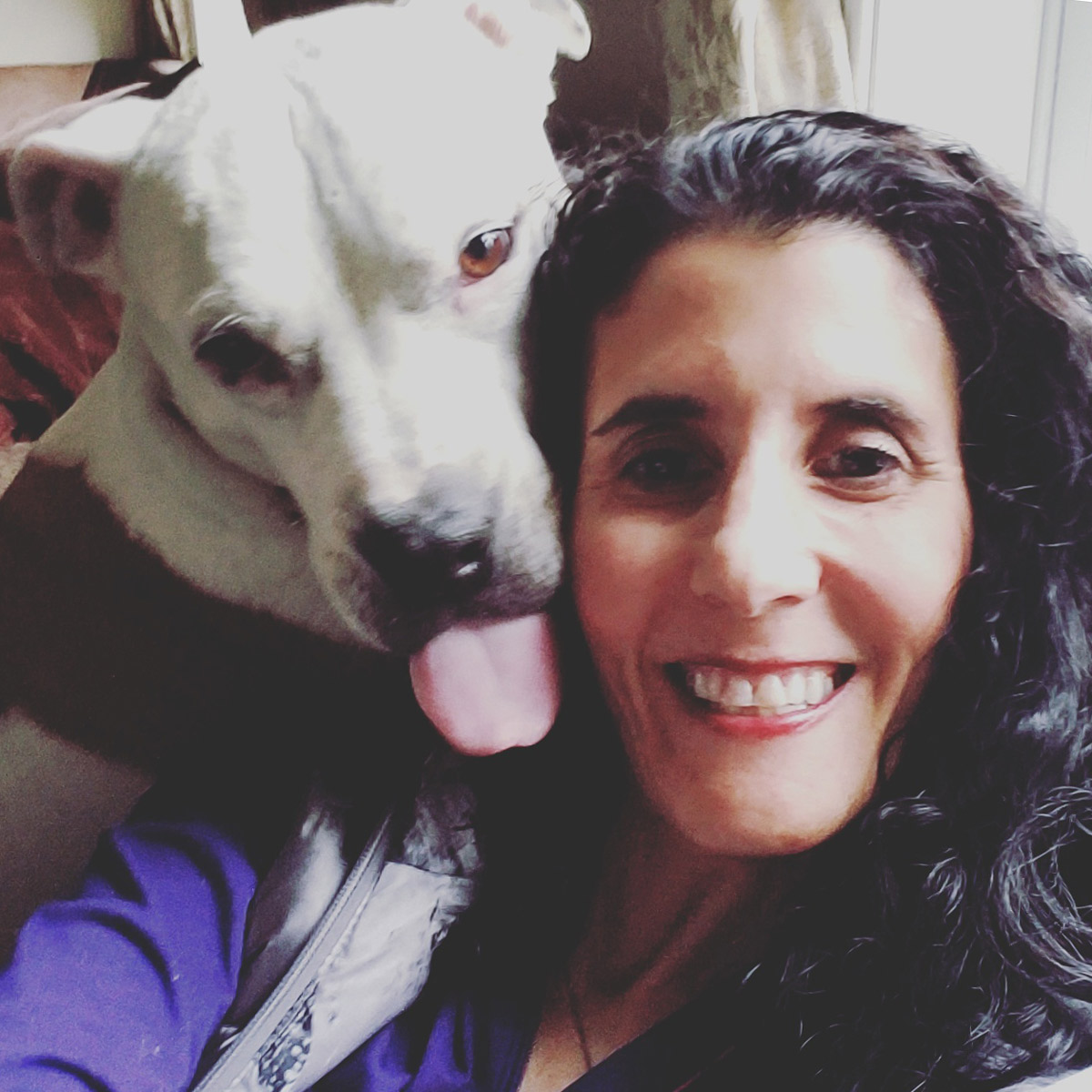
5 Common Skin Cancers in Dogs — And How They’re Treated
Key takeaways:
Skin tumors are the most commonly diagnosed tumors in dogs. The signs and appearance of skin cancer in dogs differ depending upon the type of cancer.
It’s nearly impossible to know if a tumor is cancerous by looking at it. So, check your dog often and let your vet know about any changes in their skin.
Most skin cancers in dogs can be treated by removing the tumor through surgery. Some dogs may also need chemotherapy or radiation depending on the type of cancer, its stage, and whether it has spread.
Table of contents

Skin tumors are common in dogs. Dogs can get several types of skin cancer. Each layer and section of a dog’s skin can develop unique tumors, any of which could eventually turn cancerous.
The good news is that 60% to 80% of skin tumors in dogs aren't cancerous. But, it’s nearly impossible to tell if a tumor is cancerous by looking at it. So, it’s important to talk to your vet about any changes in your dog’s skin.
Skin cancer in dogs can look like:
Changes to your dog’s skin or coat
Unusual lumps, bumps, sores, or raised areas
New pink, brown, black, red, or gray spots on your dog’s skin
Search and compare options
If you notice these or any other skin changes, let your veterinarian know. Many skin growths can be easily removed with surgery when caught early. But it all depends on the type of skin cancer your dog has.
Below we will highlight the five most common types of canine skin cancer.
1. Mast cell tumor (MCT)
Mast cells are immune cells typically involved in allergic reactions. Mast cell tumors (MCTs) develop from normal white blood cells that turn cancerous. Mast cell tumors are the most common type of cancer diagnosed in dogs, making up about 20% of all canine skin tumors. MCTs are more common in older dogs, ages 8 to 10.
Breeds at higher risk for developing MCTs are:
Boxers
Boston terriers
Bulldogs
Pugs
Rhodesian Ridgebacks
Golden retrievers
Labrador retrievers
Signs and symptoms of mast cell tumors
Mast cell tumors are known as “great imitators” because they can have a wide range in appearance. Early-stage MCTs generally appear as raised bumps on the skin’s surface or lumps just under the skin. These tumors can change in size, even from one day to the next. They may also look like warts.
Mast cell tumors: Mast cell tumors are one of the most common types of cancer in dogs. Dive deep into this type of canine cancer so you know what to expect.
Dog hot spots: Those red patches your dog keeps licking are likely hot spots. Learn how to deal with dog hot spots and when to get help.
Can dogs smell cancer? There is evidence that dogs can detect when a human has cancer. Here are the other human health conditions dogs can sniff out.
MCTs can grow anywhere on your dog’s skin but are most frequently found on the limbs, chest, and lower abdomen. The release of histamine from tumors causes stomach ulcers in some dogs.
Other symptoms of mast cell tumors can include:
Nodules or hives near the tumor site
Enlarged lymph nodes
Stomach pain
Welts
Collapse
Weight loss
Bloody or black, tar-like feces
Read more like this
Explore these related articles, suggested for readers like you.
Diagnosis and treatment for mast cell tumors
Surgical removal is recommended for all confirmed mast cell tumors. A veterinary pathologist will review a tumor sample and assign a grade to the tumor. The most common system used is a three-grade system.
Dogs with low-grade tumors have the best chance for a full recovery. High-grade tumors are more likely to spread to other tissues and organs, lessening the likelihood of a favorable outcome.
2. Malignant melanoma
A malignant melanoma develops from abnormal melanocytes, cells that create a skin pigment called melanin. These tumors grow quickly in dogs and often spread to other body areas, so an early diagnosis is critical.
Cancerous melanomas occur less often in dogs than in humans. This type of cancer is more common in dogs with dark-colored skin. Breeds at greater risk for malignant melanoma include:
Miniature schnauzers
Standard schnauzers
Scottish terriers
Signs and symptoms of malignant melanoma
Malignant melanoma is often found on a dog’s skin, mouth, toes, or the nail bed. Melanoma usually appears as brown or black raised lumps on the skin but can look like gray or pink lumps in the mouth.
Malignant melanomas around the nail bed generally show up as swollen toes. The dog can even lose the toenail and have damage to the underlying bone. Limping may be the first sign you spot that your pup has an issue with their nail bed. Your dog may also lick or chew the affected toe.
Diagnosis and treatment for malignant melanoma
Once a dog is diagnosed with malignant melanoma, staging is highly recommended. This will help you find out if their cancer has spread to other areas.
Because this type of tumor can spread to lymph nodes and lungs, treatment with chemotherapy or immunotherapy is recommended following surgery.
3. Squamous cell carcinoma
Squamous cell carcinoma (SCC) is a rare form of skin cancer in dogs. An SCC is a cancerous tumor that starts in the skin cells. It’s often caused by exposure to sunlight.
SCC tumors are usually found on light-skinned, hairless, or thinly haired areas of a dog’s body. Short-haired dogs who spend significant time outside also have a higher chance of developing squamous cell carcinoma. Large-breed, dark-haired dogs are more prone to SCC of the digits (toes).
Certain dogs are more at risk for developing this cancer than others. Breeds at higher risk include:
Bloodhounds
Collies
Beagles
Bull terriers
Scottish terriers
Pekingese
Boxers
Poodles
Norwegian elkhounds
Signs and symptoms of squamous cell carcinoma
This cancer generally appears as one tumor in a single location on the body. Tumors can grow outward into large masses that look like warts on the surface. They can turn red and become open sores, particularly on the toes.
It can be challenging to tell if these are tumors or warts. But open sores on the feet can become infected and painful.
Diagnosis and treatment for squamous cell carcinoma
SCC is typically diagnosed using a fine needle aspiration, which removes cells from a tumor. Sometimes, a biopsy may be needed to confirm the diagnosis.
Treatment involves surgery to remove the primary tumor. Any remaining part of the tumor is usually treated with radiation therapy to prevent it from regrowing. Research suggests dogs with the skin version of squamous cell carcinoma can live more than 2.5 years after diagnosis.
Although squamous cell carcinomas rarely spread to surrounding lymph nodes, they can grow and metastasize. Squamous cell carcinoma can also form in a dog’s mouth. Though not skin cancer, squamous cell carcinoma is a common type of oral cancer.
4. Histiocytic sarcoma
Histiocytic sarcoma is an aggressive form of cancer, usually seen in middle-aged and older dogs. But dogs of any age can get it.
While any dog breed can develop this tumor, the most commonly affected breeds are:
Bernese Mountain dogs
Flat-coated retrievers
Golden retrievers
Labrador retrievers
Rottweilers
Signs and symptoms of histiocytic sarcoma
Histiocytic cancer tumors can sometimes cause a visible mass on your dog, but not always. They can also cause symptoms you may see with other cancers or illnesses, such as:
Weight loss
Loss of appetite
Lethargy
Diagnosis and treatment for histiocytic sarcoma
If your dog is diagnosed with a histiocytic skin tumor, your veterinarian will want to do a complete workup to see if the cancer has spread to other body parts.
A complete diagnostic workup includes:
Blood tests
Urine sample
Serum chemistry profile
Lymph node biopsy
Chest X-rays
Abdominal ultrasound
The tests will reveal how the cancer is affecting your dog’s body. Tests will also help your veterinarian find the best treatment plan for your dog.
If the tumor is on a dog’s skin or in the bones, surgery is typically performed to remove it. But chemotherapy may be recommended if the cancer spreads to your dog’s other organs.
5. Fibrosarcoma
A fibrosarcoma is a soft-tissue tumor that develops in the connective tissue just under the skin. These tumors usually appear on a dog’s limbs and trunk. But they can also occur in the mouth and nose. In rare cases, fibrosarcomas can start in the jaw or leg bones.
Fibrosarcoma typically affects middle-aged to older dogs. Breeds with a higher risk of developing fibrosarcoma include:
Gordon setters
Irish wolfhounds
Brittany spaniels
Golden retrievers
Doberman pinschers
Fibrosarcomas are slow-growing, and they rarely spread to other parts of the body. But they can invade the surrounding tissue and muscles.
Signs and symptoms of fibrosarcoma
Fibrosarcomas in dogs differ in size and appearance. Tumors located directly beneath the skin may appear as firm, solid lumps. If there is more than one tumor, they are usually in the same location.
Fibrosarcomas located in the soft tissue are often not visible. You may notice swelling in the affected area or signs that your dog is in pain.
If your pup is in pain, they may:
Withdraw from social interaction
Have less interest in food
Refuse to be touched
If the tumor is in your dog’s mouth or nose, you may notice any of the following signs:
Mucus discharge from the nose or eyes
Excessive tearing
Bleeding from the nose
Sneezing
Snoring
Pawing at their muzzle
Difficulty picking up food
Trouble eating or swallowing
Excessive drooling
Diagnosis and treatment for fibrosarcomas
A biopsy is the preferred method to diagnose fibrosarcomas in dogs. Your vet may order X-rays or a CT scan if they think your dog’s tumor might involve a bone. Surgical removal of the tumor is the first treatment choice, although many tumors come back within a year following surgery.
How is dog skin cancer diagnosed?
To help diagnose skin cancer, your vet will look at cells from your dog’s tumor under a microscope. There are two procedures to get samples of the cells:
Fine needle aspiration
During fine needle aspiration, a small needle is placed into the mass on your dog. Then a syringe is used to draw out some cells. This method is used to diagnose most mast cell cancers.
Biopsy
To perform a biopsy, a veterinarian makes a small surgical cut in the tumor to remove a tissue sample. Or your vet may remove the entire tumor during surgery and find out if it’s cancer afterward. This is also a biopsy.
Analysis
The collected cells or tissue samples are placed on a slide and sent for analysis by a board-certified veterinary pathologist. They will look for cancerous cells in your dog’s sample to make a diagnosis.
Depending on the type of cancer your dog has, your vet may order other lab tests.
How do you treat dog skin cancer?
Treatment for a particular tumor depends mainly on the:
Type of tumor/skin cancer
Tumor location and size
Your dog's overall health
The cancer’s stage and whether it has spread
Many skin tumors are removed through surgery. Surgery is often the most effective and least costly treatment with the fewest side effects. Sometimes, your vet will remove your dog’s tumor and any lymph nodes affected by the cancerous cells.
Some tumors may need extra treatment with chemotherapy and radiation following surgery.
How serious is dog skin cancer?
Cancer in your dog is always something to take seriously. But the outlook for a dog with skin cancer depends on several factors. These include the type of skin cancer and how early the diagnosis is made. Your veterinarian can give you a better idea of what to expect for your dog.
Several types of skin cancer can affect dogs. The good news is that many can be successfully treated with surgery alone. Spotting signs of skin cancer in its early stages is critical to successful treatment outcomes.
Frequently asked questions
No. Black spots on a dog’s skin can also be caused by hyperpigmentation. Hyperpigmentation is usually a symptom of another underlying condition, such as hormone imbalance, allergies, or inflammation. But if your dog’s skin develops a black or dark spot, it’s always best to consult your veterinarian to get to the bottom of the cause.
The speed at which skin cancer might spread in dogs depends on the type of cancer, its severity, and how early it was diagnosed. Your veterinarian will be able to give you an idea of what to expect based on your dog’s specific type of cancer.
How long dogs with skin cancer live depends on many factors, such as the type of cancer your dog has, how advanced it is, and how well your dog responds to skin cancer treatment.
When caught early, some skin cancers in dogs can be successfully treated, and your dog can live for a long time afterward. Other types of skin cancers, however, are more aggressive and can spread fast. Dogs with these types of aggressive cancers may have a short lifespan after getting skin cancer.
The bottom line
Our canine companions can get several types of skin cancer. While skin tumors are dogs’ most commonly diagnosed tumors, many are benign (non-cancerous). But there is no way to know just by looking whether a lump is benign or cancerous.
Familiarize yourself with the normal lumps and bumps throughout your pup’s coat. Also, check them often for any changes. If you spot changes to their skin, unusual rashes, or swelling around their toes, make an appointment with your vet. Catching cancer in its early stages gives your dog the best chance for successful treatment.
Why trust our experts?



References
Affolter, V. K. (2004). Histiocytic proliferative diseases in dogs and cats. World Small Animal Veterinary Association World Congress Proceedings, 2004.
Aim at Melanoma Foundation. (n.d.). Stages of melanoma.
Albright, S. M. (2020). Hope for diagnosing and treating histiocytic malignancies in dogs. American Kennel Club Canine Health Foundation.
American College of Veterinary Pathologists. (n.d.). What is veterinary pathology?
Biller, B., et al. (2016). 2016 AAHA oncology guidelines for dogs and cats. Journal of the American Animal Hospital Association.
Brooks, W. (2023). Mast cell tumors in dogs and cats. Veterinary Partner.
Brooks, W. (2024). Malignant melanoma in dogs and cats. Veterinary Partner.
Camus, M. S., et al. (2016). Cytologic criteria for mast cell tumor grading in dogs with evaluation of clinical outcome. Veterinary Pathology.
De Nardi, A. B., et al. (2022). Diagnosis, prognosis and treatment of canine cutaneous and subcutaneous mast cell tumors. Cells.
Erb, H. (2024). Skin cancer in dogs: Signs, symptoms, treatments. American Kennel Club.
Ettinger, S. (2017). Mast cell tumors: Medical and surgical approaches. World Small Animal Veterinary Association Congress Proceedings, 2017.
Farese, J. (2016). Soft tissue sarcoma in dogs and cats. World Small Animal Veterinary Association Congress Proceedings, 2016.
Garrett, L. D. (2014). Canine mast cell tumors: Diagnosis, treatment, and prognosis. Veterinary Medicine: Research and Reports.
Lundgren, B. (2022). Oral squamous cell carcinoma in dogs and cats. Veterinary Partner.
Martano, M., et al. (2018). Canine oral fibrosarcoma: Changes in prognosis over the last 30 years? The Veterinary Journal.
Moriello, K. A. (2018). Hyperpigmentation (Acanthosis nigricans) in dogs. Merck Veterinary Manual.
NC State University. (n.d.). Medical oncology: 5 types of skin cancer in dogs.
PennVet Ryan Hospital. (n.d.). Histiocytic sarcoma in dogs.
PennVet Ryan Hospital. (2017). Melanoma in dogs.
Reyers, F., et al. (2014). Fine needle aspirates. World Small Animal Veterinary Association World Congress Proceedings, 2014.
Rancho Village Veterinary Hospital. (n.d.). The signs & spread of cancer in dogs.
Veterinary Partner. (2023). Skin biopsies in dogs and cats.
Villalobos, A. E. (2018). Tumors of the skin in dogs. Merck Veterinary Manual.
Willcox, J. L., et al. (2019). Clinical features and outcome of dermal squamous cell carcinoma in 193 dogs (1987-2017). Veterinary and Comparative Oncology.



























